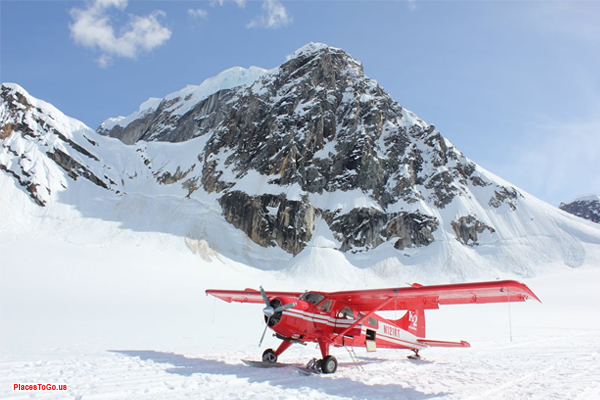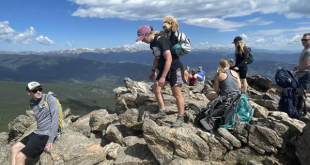If you’re an experienced climber looking to push your limits, the United States offers some of the most extreme and rewarding ascents in the world. Whether you’re drawn to icy glacier traverses or technical rock faces, this guide covers the ultimate U.S. mountaineering adventures for serious climbers.
Why the U.S. is a Mecca for Mountaineering
The U.S. delivers an extraordinary variety of landscapes for advanced climbers. From the glaciated volcanoes of the Pacific Northwest to the rugged peaks of Alaska and Colorado, mountaineering expeditions in the United States cater to nearly every alpine discipline. You’ll find some of the best mountaineering routes in the U.S. that rival any in the world.
In addition to the terrain, you’ll benefit from accessible climbing permits, highly trained guiding services, and world-class rescue infrastructure. This makes it not only adventurous but also relatively safer compared to remote international expeditions.
Top Mountaineering Challenges in the U.S.
1. Mount Rainier, Washington
- Elevation: 14,411 ft
- Highlights: Glacier climbing, crevasse rescue, unpredictable weather
- Why It’s Ultimate: Known for high-altitude climbing in America, Rainier is often used as a training ground for Denali and Everest.
2. Grand Teton, Wyoming
- Elevation: 13,775 ft
- Route: Owen-Spalding or Direct Exum Ridge
- Skill Level: Technical climbs in the U.S. don’t get more classic than this. It requires rock climbing skills, rope work, and route finding.
3. Denali, Alaska

- Elevation: 20,310 ft (highest in North America)
- Climb Type: Expedition-style, often taking 2–3 weeks
- Challenge: Considered one of the most extreme mountain climbing USA experiences. Freezing temps and self-supported climbing make this a brutal test.
4. Mount Shasta, California
- Elevation: 14,179 ft
- Climb Style: Snow and ice with steep ascents
- Season: May to July
- Perks: Perfect for learning alpine climbing for seasoned mountaineers with its varied routes.
5. Longs Peak, Colorado
- Elevation: 14,259 ft
- Famous Route: Keyhole
- Risk Factor: Thunderstorms and altitude require careful planning. It’s one of the top peaks for experienced climbers.
Insider Tips for Planning Your Ascent
- Get permits early: Many routes require advance registration.
- Train for altitude: Cardio, strength, and acclimatization are vital.
- Use certified guides, especially for Denali or winter climbs.
- Check forecasts: Mountain weather changes fast.
- Gear checklist:
-
- Mountaineering boots
- Ice axe and crampons
- Avalanche beacon (where needed)
- GPS and maps
Staying Safe in the Mountains
- Safety is key in these summit challenges for expert climbers. Always:
- Practice self-rescue skills
- Learn avalanche awareness and terrain assessment
- Understand the signs of altitude sickness
- Pack a satellite communication device
FAQs About Mountaineering Adventures in the U.S.

- What are the top U.S. destinations for advanced mountaineering?
The U.S. offers challenging mountaineering spots like Denali in Alaska, Mount Rainier in Washington, and the Grand Teton in Wyoming—each known for its technical climbs and high-altitude conditions. - Which mountain in the U.S. is the hardest to climb?
Denali is often considered the most difficult due to its extreme elevation, harsh weather, and remote access, making it a true test for serious climbers. - Do mountaineering expeditions in the U.S. require special permits?
Yes, permits are needed for several popular climbing locations, such as Denali and Mount Rainier, and they are frequently obtained months in advance. Before your trip, review the rules set forth by the local government or the national park. - What should serious climbers pack for a U.S. mountaineering trip?
- Ropes, harnesses, crampons, ice axes, appropriate clothing, GPS, and emergency supplies are all necessary pieces of equipment. Adjust your pack according to the weather, terrain, and height of the mountain.
- Is technical training necessary for U.S. alpine climbs?
Naturally. Many routes incorporate mixed climbing, rock, and ice. Success and safety depend on alpine experience, route planning skills, and avalanche awareness. - How do I train for high-altitude climbs in the U.S.?
Prioritize strength training, acclimatization treks, and cardiovascular endurance. Your body is better prepared for oxygen-thin situations if you spend some time at elevation beforehand. - Are guided expeditions available for serious mountaineering in America?
Yes. Reputable guide companies offer expert-led trips for technical climbs, such as Mount Shasta and the Tetons, as well as multi-day ascents in the Alaska Range.
For more outdoor challenges and epic hiking routes, explore our full guide under the Mountain & Wilderness Adventures section.





